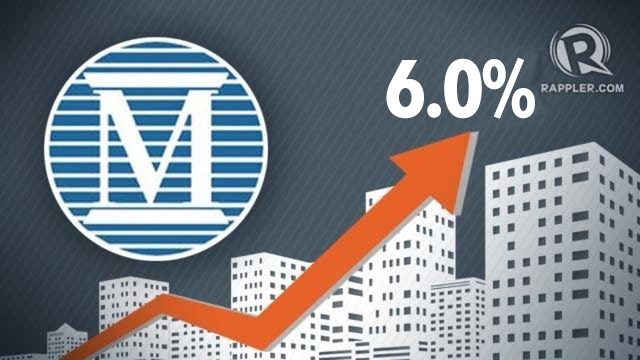SUMMARY
This is AI generated summarization, which may have errors. For context, always refer to the full article.

MANILA, Philippines – Moody’s Investor Service predicts the Philippines will grow faster this year with its vibrant, domestically-focused growth putting it in a better position compared to some of its export-oriented neighbors.
“We expect 6% GDP growth in 2016, up from 5.8% in 2015,” said Moody’s Vice President and senior analyst Christian de Guzman in a report entitled “Philippines’ growth shows resistance to global slowdown.”
De Guzman cited the increased push for infrastructure projects as well as election spending, which would boost the country’s domestic consumption, as reasons for optimism.
“Looking ahead, the PPP program for infrastructure development and a pickup in economic activity as the country gears up for midyear elections will underpin growth,” he said.
Moody’s also believes that the election boost will transcend investor fears of political uncertainty relating to the handover of power.
“Although the presidential elections create some political uncertainty, we expect economic reform and policies that foster infrastructure investment and maintain fiscal prudence to remain the key long-term goals of the government,” Moody’s said.
The country’s GDP growth increased to 6.3% in the 4th quarter from the revised 6.1% in the 3rd quarter of last year due mainly to robust domestic demand and better government spending.
This, however, was not enough to improve on the country’s 2015 performance as full-year growth slowed down to 5.8% last year from 6.1% in 2014. It also missed the government target of 7% to 8%.

Strong position in the region
De Guzman pointed out that robust domestic household consumption and increased government spending – the factors credited for the 4th quarter boost – will serve the Philippines well in what is expected to be a dismal year for global growth.
This is because unlike most of its peers, majority of the country’s growth is based internally, making it less vulnerable to fluctuating demand for exports.
“This strong performance comes at a time when weak global demand is slowing growth in export-oriented Asian economies, and puts the Philippines in a more robust position than many of its regional peers to weather any further global economic and financial market volatility,” he said.
The IMF and the World Bank are both pessimistic about global growth this year with both warning of potential shocks due to China’s slowdown, a strong dollar, and falling oil prices.
The World Bank also projects growth in the East Asia and Pacific region to slow to 6.3% in 2016 from an estimated 6.5% expansion in 2015, with China’s expansion expected to ease to 6.7%, from a projected growth of 6.9% last year.
Reasonably protected
Although the Philippines is not immune to the economic slowdown in China, de Guzman said the country is less reliant on Chinese demand than many of its regional peers.
“Whereas many Asian countries count China as their largest export partner, it is the Philippines’ fourth-largest export destination. The Philippines is also much less dependent on commodity receipts for exports or fiscal revenues than its regional peers,” he said.
De Guzman added that the Philippines receives a large share of its current account receipts consisting of export earnings from goods and services as well as remittance inflows from the US, further hedging against China’s slowdown.
Low oil prices are also generally agreed to be a net positive for the Philippines as a net importer. But remittances, particularly from the Middle East, could be affected.
Government revenue might also be hit as oil accounts for a significant portion of the Bureau of Customs’ revenue.
De Guzman also pointed out that the 4th quarter push came despite the severe El Niño dry spell, which hit farm output and caused agriculture to contract by 0.2% in the 4th quarter.
Responsive government
Moody’s upgraded the country’s credit rating to Baa2 or two notches above “junk” status in December 2014 on the back of the government’s reduced debt levels and the country’s robust economy. It maintained its rating in its latest report in December of last year.
“The strong growth is credit positive because it demonstrates the economy’s resistance to global shocks and points to the government’s ability and willingness to shore up domestic demand amid a weak external environment,” De Guzman said.
Former Socioeconomic Planning Secretary Arsenio Balisacan pointed out that the economy’s newfound fundamentals give the government the fiscal space to be able to stimulate sectors of the economy as needed without straining government finances.
He added that this is a major factor in making growth in the upper half of 6-7% a reasonable target for 2016. – Rappler.com
Add a comment
How does this make you feel?
There are no comments yet. Add your comment to start the conversation.